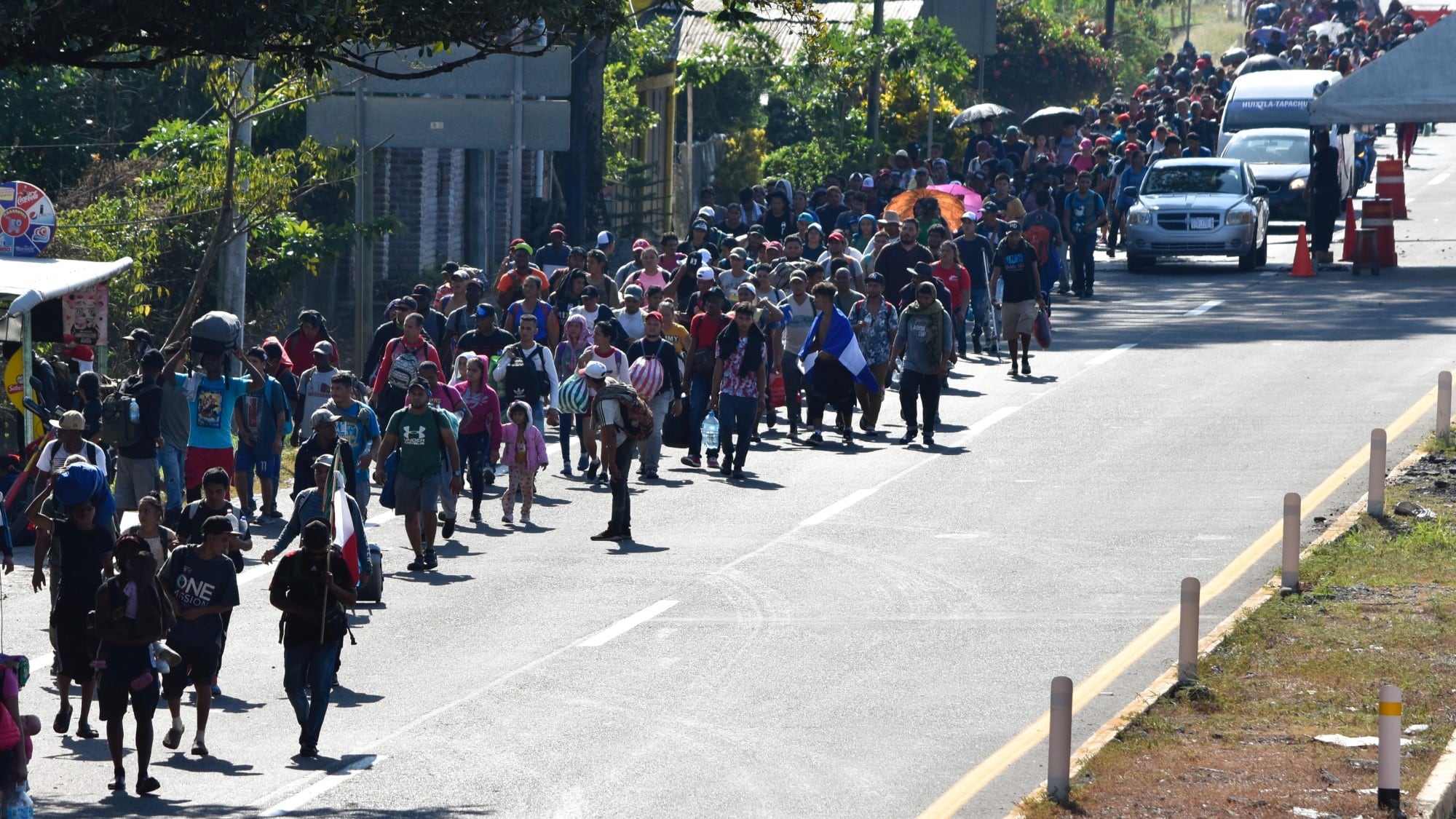By Edgar H. Clemente
Under a beating sun, thousands of migrants in a caravan continued to trudge through southern Mexico on Tuesday, with some saying they expect nothing good from an upcoming meeting this week between American and Mexican officials about the migrant surge at the U.S. border.
The migrants passed by Mexico’s main inland immigration inspection point outside the town of Huixtla, in southern Chiapas state. National Guard officers there made no attempt to stop the estimated 6,000 members of the caravan.
The migrants were trying to make it to the next town, Villa Comaltitlan, about 11 miles (17 kilometers) northwest of Huixtla. In the past, Mexico has let migrants go through, trusting that they would tire themselves out walking along the highway. No migrant caravan has ever walked the 1,000 miles (1,600 kilometers) to the U.S. border.
U.S. officials are expected to press Mexico to stop more migrants at a meeting scheduled for Wednesday.
The meeting “will be between fools and fools, who want to use women and children as trading pieces,” said migrant activist Luis García Villagrán, one of the organizers of the caravan. “We are not trading pieces for any politician.”
“What Mexico wants is the money, the money to detain and deport migrants,” Villagrán said.
Mexican President Andrés Manuel López Obrador confirmed last week that U.S. officials want Mexico to do more to block migrants at its southern border with Guatemala, or make it more difficult to move across Mexico by train or in trucks or buses — a policy known as “contention.”
But the president said that in exchange, he wants the United States to send more development aid to migrants’ home countries, and to reduce or eliminate sanctions against Cuba and Venezuela, noting “that is what we are going to discuss, it is not just contention."
Some on the caravan, like Norbey Díaz Rios, a migrant from Colombia, said turning back was not an option. Díaz Rios, 46, said he left his home because of threats from criminal gangs, and plans to ask for asylum in the U.S.
“You know that you are walking for a purpose, with a goal in mind, but it is unsure if you are going to make it, or what obstacles you will find along the way,” said Díaz Rios. “I can't return to Colombia.”
“They should give me a chance to remain in a country where I can get papers and work and provide for my family,” he added.
U.S. Secretary of State Antony Blinken, Homeland Security Secretary Alejandro Mayorkas and White House homeland security adviser Liz Sherwood-Randall will travel to Mexico City for the talks.
This month, as many as 10,000 migrants were arrested daily at the southwest U.S. border.
The Mexican government felt pressure to address that problem, after U.S. officials briefly closed two vital Texas railway border crossings, claiming they were overwhelmed by processing migrants.
That put a chokehold on freight moving from Mexico to the U.S., as well as grain needed to feed Mexican livestock moving south. The rail crossings have since been reopened, but the message appeared clear.
The caravan started out on Christmas Eve from the city of Tapachula, near the border with Guatemala, and migrants spent Christmas night sleeping on scraps of cardboard or plastic stretched out under awnings, in tents, or on the bare ground.
The migrants included single adults but also entire families, all eager to reach the U.S. border, angry and frustrated at having to wait weeks or months in the nearby city of Tapachula for documents that might allow them to continue their journey.
Mexico says it detected 680,000 migrants moving through the country in the first 11 months of 2023.
In May, Mexico agreed to take in migrants from countries such as Venezuela, Nicaragua and Cuba who had been turned away by the U.S. for not following rules that provided new legal pathways to asylum and other forms of migration.
But that deal, aimed at curbing a post-pandemic jump in migration, appears to be insufficient as numbers rise once again, disrupting bilateral trade and stoking anti-migrant sentiment.









